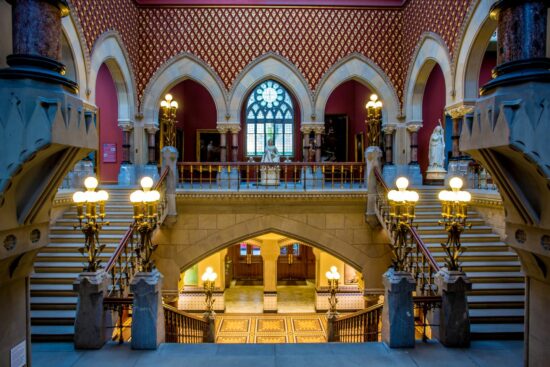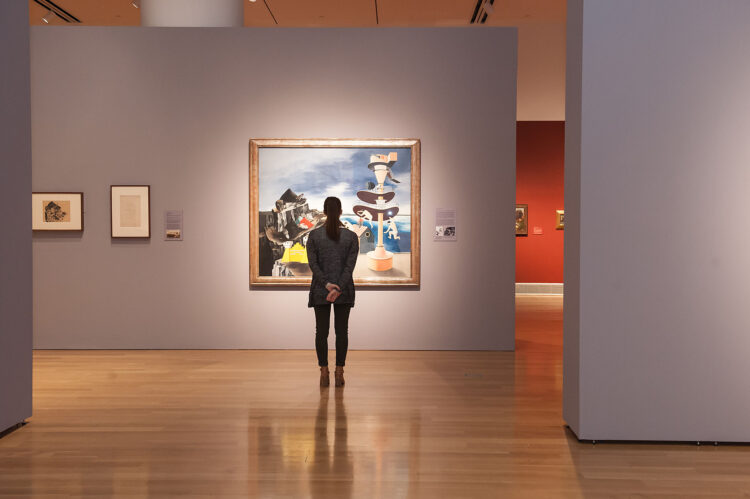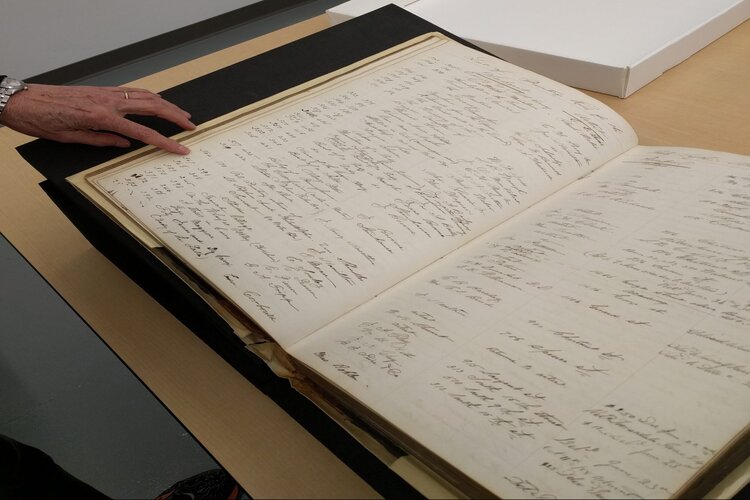Contributed by Jahna Auerbach, Assistant Archivist for the John Rhoden papers
Next up in our series on John Rhoden’s circle is Ásmundur Sveinsson (1893-1982). John met Sveinsson, an Icelandic sculptor, when he toured Iceland between 1958 and 1959. Many of the color slides in the John Rhoden papers from Iceland are of Ásmundur Sveinsson’s art and studio space. These images capture how happy Sveinsson was to share his home, his studio, and his art.
Ásmundur Sveinsson was one of Iceland’s leading sculptors. His work is regarded as being some of the most essential “manifestations of the Icelandic narrative tradition, society, and nature in the 20th century.”
His early work consists of abstract figurative sculptures influenced by Icelandic folklore and myths, animals, and nature as well as men and women at work. His works are reminiscent of a simpler time and invoke feelings of tradition and comfort. Later in his career, Sveinsson began to create more abstract artwork and was influenced by the development of technology.
He lived during a time when science and technology were making huge leaps and bounds. Men were traveling to the moon, the sound barrier had been broken, travel was becoming easier with the help of airplanes, and nuclear power was being developed and used. Sveinsson embraced the modernity of the world he lived in and believed that it would improve people’s lives. These changes in society influenced later works of his, and he started creating more abstract forms and using different materials.
The change in Sveinsson’s influences is clear when examining the titles of his artwork. Some examples of the titles of his later work, after the 1950s, are “The Future,” “Electricity,” and “Through the Sound Barrier,” titles of his earlier work are “The Washerwoman” and “The Water Carrier.” The Reykjavík Art Museum explains Ásmundur’s work perfectly, “Many of his pieces were conceived as a part of public space, an integral part of the surroundings, or were developed as design and craft works.”
Sveinsson surrounded himself with his art, to the extent that he designed and built his own home and studio. The building took eight years to construct and was finished in 1950. The building’s exterior is white concrete and features geometric shapes, clean lines, slanted walls, and a large circular room with a domed ceiling. The design was inspired by Greek, Egyptian, and Turkish architecture. Ásmundur wanted the architecture of the building to be in harmony with the landscape, which he said was “treeless and naked.” He felt that buildings should complement their surroundings and thought that the stark whiteness of the building and design was perfect for the traditional Icelandic landscape.
The grounds of his home/studio are filled with large scale sculptures of his own creation, some as tall as the building itself. The combination of the sculptures and the unique architecture of the buildings created a feeling of other-worldliness.
Ásmundur wanted his art to be accessible not just by society’s elite but by the public as well. Not only are many of his pieces created to be in public spaces, but his home and studio were also donated to the city of Reykjavik after his death in 1983.
Images of Ásmundur Sveinsson with his sculptures from the Rhoden Collection.
For more information on Sveinsson’s early works, visit the Ásmundarsafan website at the following link: https://safneign.listasafnreykjavikur.is/en/%C3%81smundur
Sources
- Ásmundur Sveinsson
- https://artmuseum.is/asmundarsafn
- https://artmuseum.is/learn/%C3%A1smundur
- https://www.artdependence.com/events/2018/%C3%A1smundur-sveinsson-art-for-the-people/
This project, Rediscovering John W. Rhoden: Processing, Cataloging, Rehousing, and Digitizing the John W. Rhoden papers, is funded in part by the National Endowment for the Humanities, a federal agency.
ABOUT THE NATIONAL ENDOWMENT FOR THE HUMANITIES
Created in 1965 as an independent federal agency, the National Endowment for the Humanities supports research and learning in history, literature, philosophy, and other areas of the humanities by funding selected, peer-reviewed proposals from around the nation. Additional information about the National Endowment for the Humanities and its grant programs is available at: www.neh.gov.







































